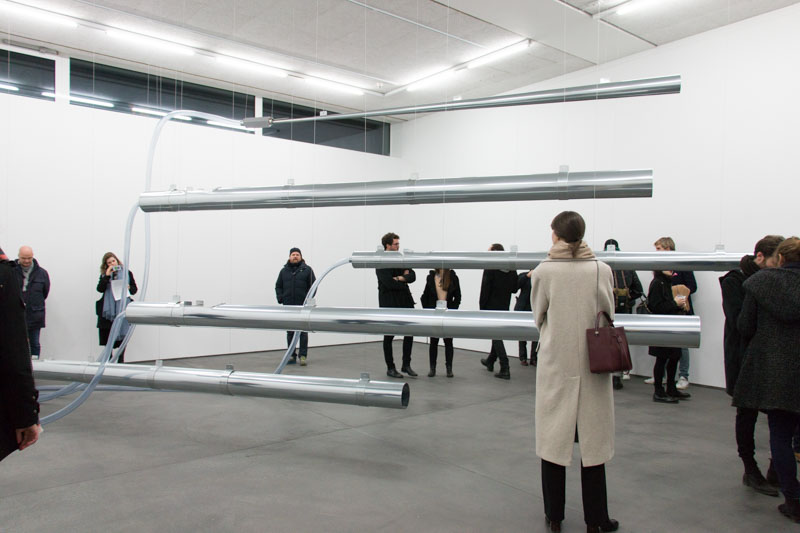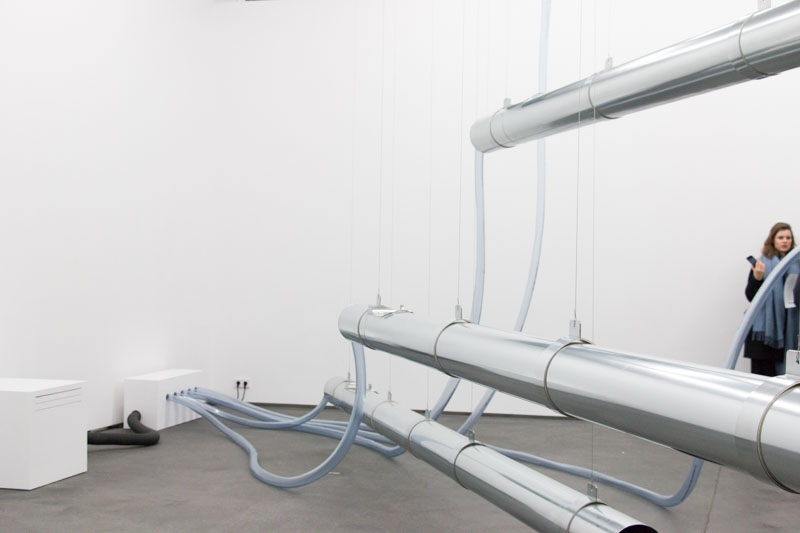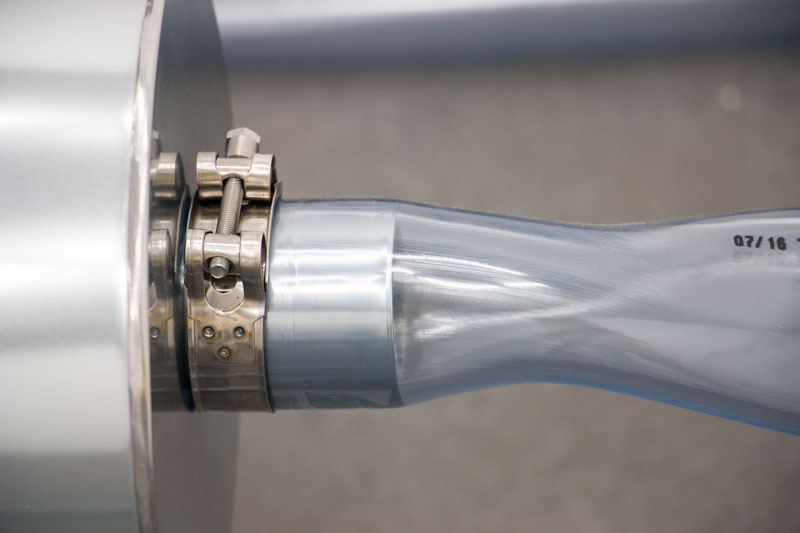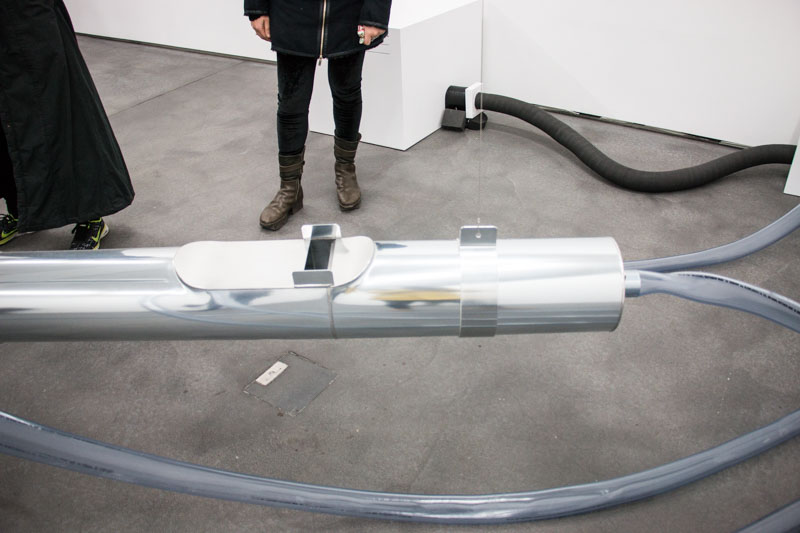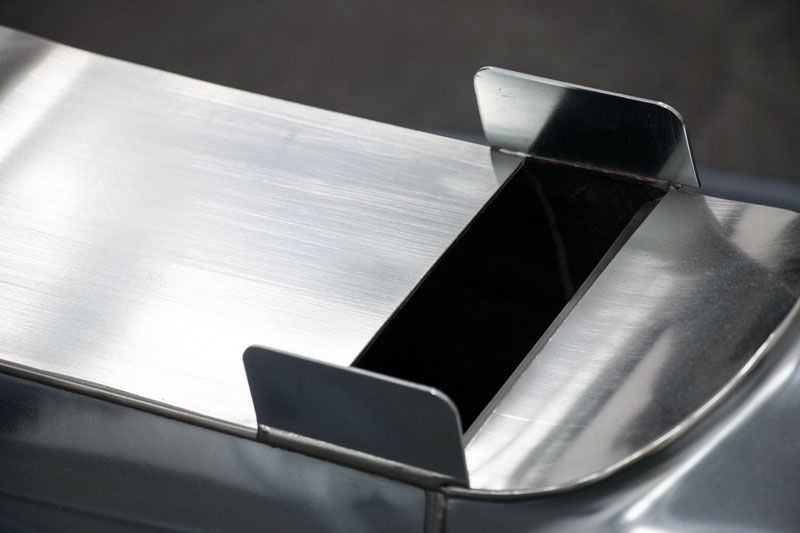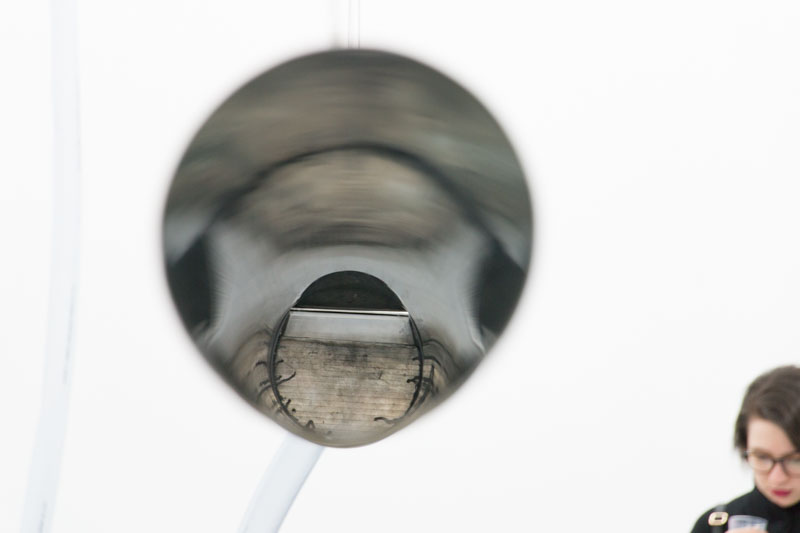‘Meatus’ is the latest group show from the Berlin-based art collective Das Numen. Composed of the artists Julian Charrière, Andreas Greiner, Markus Hoffmann and Felix Kiessling, the group’s collaborative work draws upon the expertise of science, mathematics and experimentation, as seen in their recent opening at Dittrich and Schlechtriem.
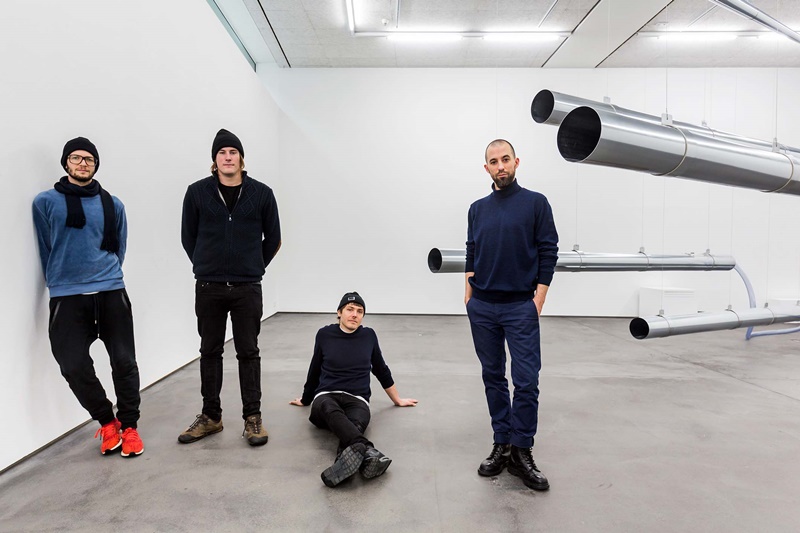
Das Numen: ‘Meatus’, 2017 // Copyright Amin Akhtar
The installation features the use of weather stations, computer programming and a series of suspended and erected flute pipes. Analysed data from the weather stations is repeatedly processed and eventually converted into a form of kinetic energy. The output that is amplified through the pipes disrupts the balance between sound and silence. In an open space, the sound stretches on to create distant and faint call-and-responses that almost feel universal. Through sound and set-up, their work expertly deals with the present moment and is perfectly exemplified in the overwhelming sensory experience viewers and listeners receive.
Berlin Art Link caught up with the collective to discuss their influences behind ‘Meatus’.
Candice Nembhard: ‘Meatus’ is set to inaugurate the new gallery space at Dittrich and Schlechtriem. How does this new collection of work differ from prior exhibitions? In what way does inhabiting a new unknown space inform this installation?
Das Numen: We appreciate working with the phenomenon of global weather conditions given its unpredictability and the fact that the atmosphere, we as a species contribute to, has no borders. Whether the space is new or known is somehow irrelevant. ‘Meatus’ works with the acoustic parameters of the architectonic features of the space. The space gets reactualised, set in motion—vibrating through the deep frequencies that the installation’s organ pipes produce. This physical phenomenon is detached from its historic meaning.
CN: There appears to be a motif of suspension and isolation in your exhibitions. Why did you decide to isolate ‘sound’ or instruments of sound in your latest collaboration?
DN: ‘Meatus’ incorporates a transformation of precise data into the analogue resonance bodies of organ pipes that in turn resonate with the resonance body of the architectonic space surrounding it. Formally, the visual isolation and horizontal installation of pipes was most appropriate to match the floating presence of sound produced by it. Spreading the organ pipes allows the viewer a wider range of exploring different sound experiences, while moving around and in-between the pipes. Rather than looking at a clearly defined object he is separated from, the viewer has the chance to become an active co-creator of the experience he is participating in.
CN: In that regard, what is the relationship like between sound and space and how does that impact your ability to create a collective show?
DN: Sound and space are mutually dependent. ‘Collectivity’ also happens in relation to the viewer and the installation. A high level of subjective experience in combination with the synchronous collective experience—the show provides a chance to experience collectively.
CN: Collectively, ‘Meatus’ uses very precise, calculated measurements akin almost to a science experiment. As practicing artists, how would you compare the fields of mathematics and physics to the art world?
DN: All three fields/systems have a set of rules that help the observer to evaluate, decide and co-create a reality they are trying to describe and understand. Knowing and de/reconstructing them to create something that makes the world more colorful and prepared for future generations to come is always an evolutionary step.
CN: And finally, given the pragmatic nature of your work, do you believe that art and the production of art should be practical?
DN: To be pragmatic would be to solve a globally relevant problem. Our work is a faint precursor and addresses a cloud of triggers that might raise awareness for important questions. Perhaps art should look poli-perspectively at the world. If this is called “practical” and not too complicated by the majority of the society we are living in: then, yes, it should be practically multidimensional.
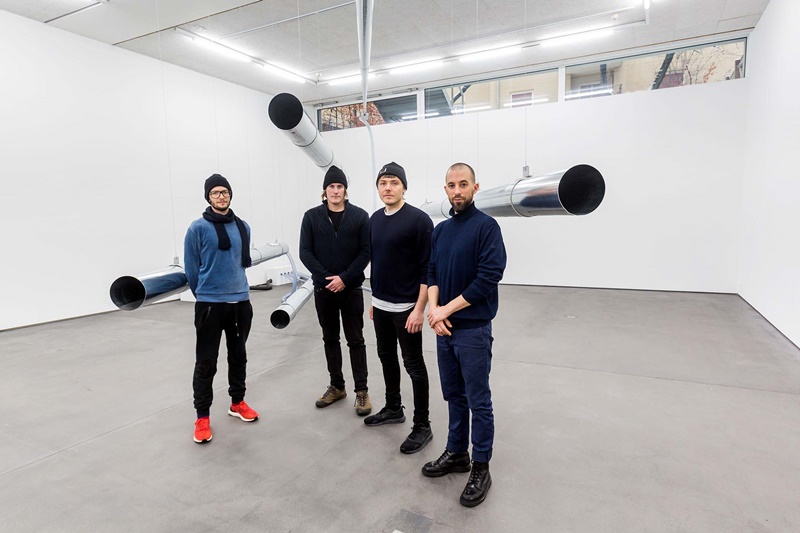
Das Numen: ‘Meatus’, 2017 // Copyright Amin Akhtar
Exhibition Info
DITTRICH & SCHLECHTRIEM
Das Numen: ‘Meatus’
Exhibition: Jan. 28–Mar. 11, 2017
Linienstraße 23, 10178 Berlin, click here for map

